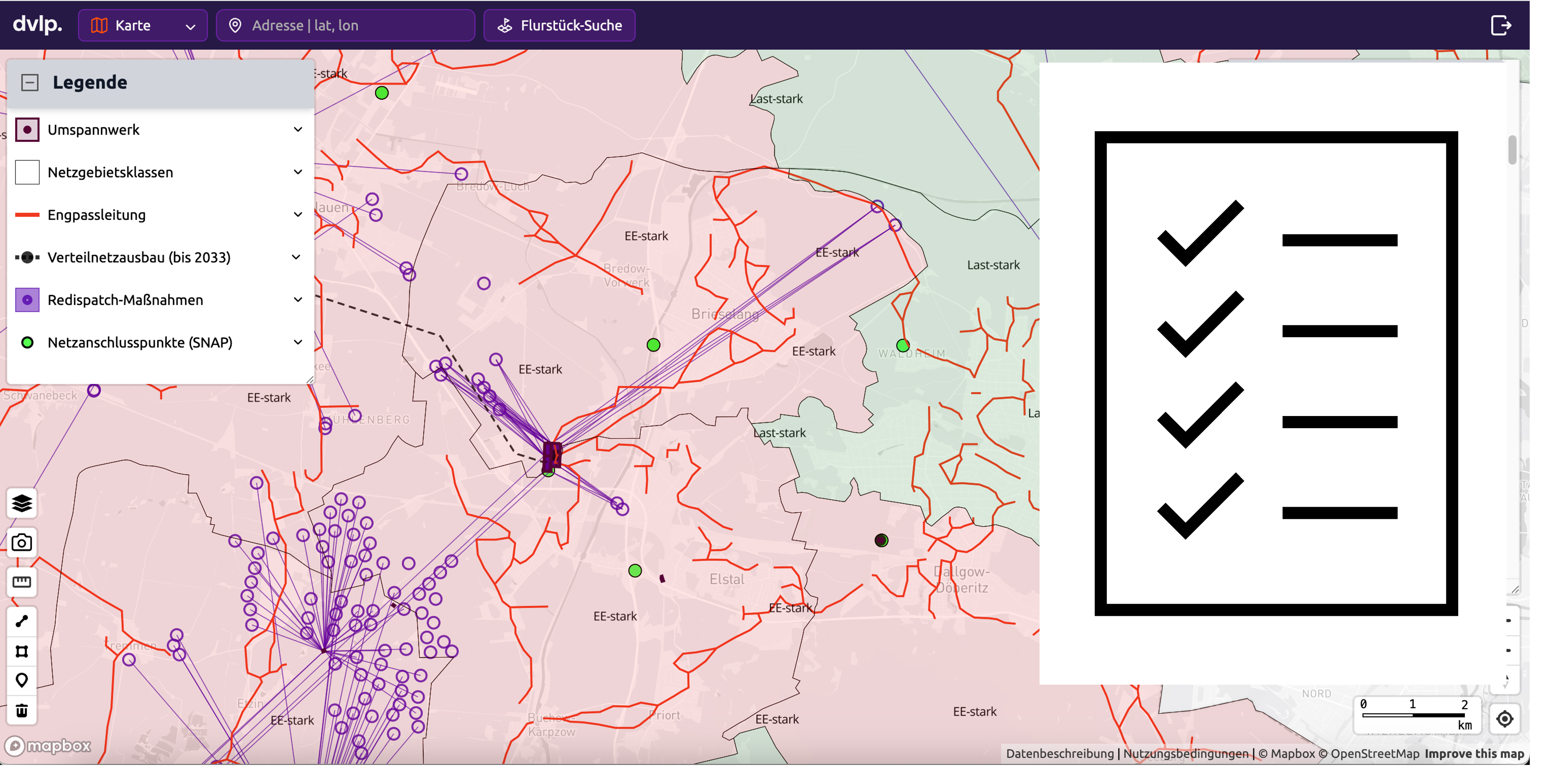Digitized spatial planning for Germany
Construction management procedures must be carried out for most ground-mounted solar systems in accordance with §29 BauGB. It checks whether a building project meets the goals of regional planning. That is the reason why the stipulations in regional plans must be observed when planning solar ground-mounted systems. It is a challenge for project developers to comply with these regional plans, as there are 120 planning regions across Germany.

Spatial planning in Germany is divided into different levels
- Waistband: The Ministry of Housing, Urban Development and Construction formulates laws that regulate spatial planning at other levels of planning (e.g., Regional Planning Act -ROG)
- countries: The federal states formulate nationwide spatial planning plans with specifications on settlement structure, open space structure and infrastructure (e.g., Saxony State Development Plan)
- regions: In accordance with ROG, the states have created so-called planning regions, which specify the nationwide spatial planning plans in “regional plans” with a higher level of detail (e.g., Leipzig-Westsachsen regional plan)
- Municipalities: The administrative municipalities draw up land use plans (preparatory construction plans) and development plans (binding construction plans) in order to arrange and implement construction projects. These plans must be adapted to regional planning objectives.
Construction management procedures must be carried out for most ground-mounted solar systems in accordance with §29 BauGB. It checks whether a building project meets the goals of regional planning. That is the reason why the stipulations in regional plans must be observed when planning solar ground-mounted systems.
It is a challenge for project developers to comply with these regional plans, as there are 120 planning regions across Germany. On the one hand, the categorization of areas relevant to spatial planning differs. For example, priority areas for wine and fruit growing are identified in the Halle regional plan. The West Mecklenburg Regional Plan pays special attention to Red Kite action areas.
On the other hand, the importance of designated areas for the implementation of ground-mounted solar systems differs. According to the Leipzig-Westsachsen regional plan, no plants are permitted in “regionally important areas of cold air generation.” Apart from the Saarbrücken Regional Association, no other planning region comes to this conclusion. Numerous environmental reports have also found no or only slight impairment of the climatic function of solar systems.
In the DVLP.energy platform, the cartographic specifications of more than 80% of all regional plans can be viewed digitally and stored with web links to the textual specifications. In this way, project developers can see directly whether potential areas are located in the identified areas of the regional plans and check whether solar systems are permitted there. This saves unpleasant surprises in land use planning when a lot of work has already gone into project planning. In addition, we ensure that the latest regional plans are always displayed. For example, the Upper Lusatia-Lower Silesia regional plan, which only recently came into force, is already included.



